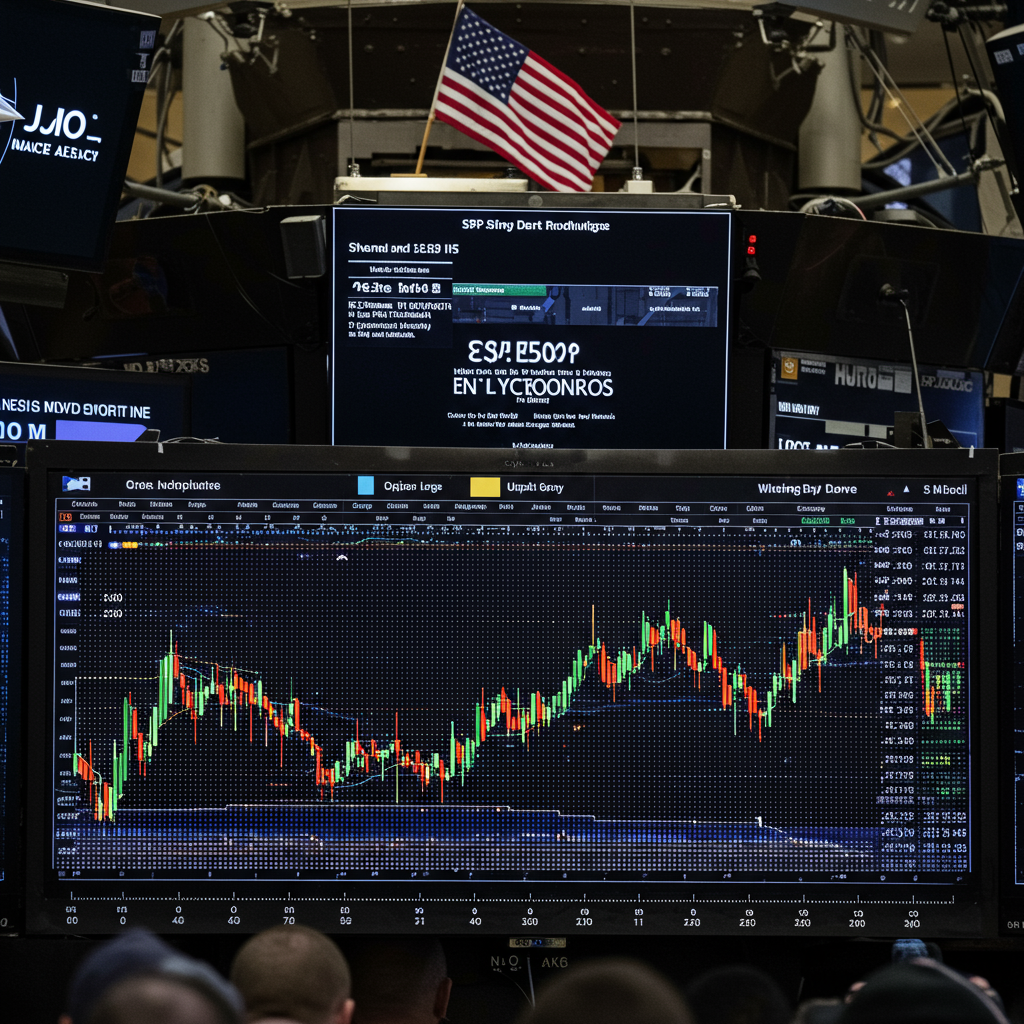Wall Street Wraps Jittery Week Amid Volume Surge
A volatile trading week concluded on Wall Street with stocks posting losses, as investors grappled with a mix of economic signals, geopolitical developments, and significant market mechanics. The session’s close saw a notable spike in S&P 500 trading volume, heavily influenced by a massive $6.5 trillion options expiration event.
The broad market sentiment remained cautious. While signs emerged that President Donald Trump might pursue diplomacy in the conflict between Israel and Iran, this failed to significantly boost investor appetite for risk assets.
Key Factors Driving Market Action
Several factors converged to shape the market’s performance and the surge in trading activity:
Options Expiration: The expiration of approximately $6.5 trillion in options contracts on Friday was a primary driver of the concentrated volume spike, particularly in the final minutes of trading as market participants adjusted positions.
Federal Reserve Outlook: Comments from Federal Reserve’s Christopher Waller provided some support for yields. Waller suggested that interest rate cuts could potentially begin as early as July, a sentiment that contributed to a decline in short-dated Treasury yields. The yield on the policy-sensitive two-year note, for instance, slipped to around 3.9%.
Geopolitical and Trade Concerns: Ongoing geopolitical tensions and uncertainties surrounding trade policies continued to weigh on market sentiment, limiting upside potential.
Pressure on Chipmakers: The semiconductor sector faced notable headwinds. A report from the Wall Street Journal indicating the U.S. government might revoke waivers allowing allies to operate semiconductor plants in China contributed to a nearly 1% slide in a closely watched gauge of chipmakers.
Navigating Sector-Specific Headwinds: The AMD Story
Despite the sector-wide pressure on chip stocks, specific optimism emerged for some companies, particularly those focused on the burgeoning artificial intelligence (AI) market.
Advanced Micro Devices (AMD), for instance, is reportedly seeing growing bullish sentiment on Wall Street concerning its AI initiatives. Analysts like Harsh Kumar at Piper Sandler recently raised their price target for AMD stock to $140 (from $125), maintaining an “Overweight” rating. This positive outlook stems from increasing confidence in AMD’s graphics processing unit (GPU) segment and its overall financial performance.
Key drivers cited include recent product launches such as the Helios rack system and the new MI350 AI chips, alongside a preview of the upcoming MI400 series. These products are seen as potentially boosting growth within AMD’s Instinct AI accelerator business. Beyond AI, AMD’s largest client business segment is also reportedly showing signs of improvement with increased customer “pull-ins,” where orders are placed earlier than anticipated. While a revival in AMD’s broader GPU business by late 2025 could be contingent on resolving certain China-related issues mentioned in analyst notes, investor confidence in the company’s strategic direction and AI product pipeline appears strong.
Other Market Movers
Elsewhere in the markets, oil prices saw a decline. The U.S. dollar, however, proved resilient, recording its best week since February against a basket of currencies.
The combination of technical factors like the massive options expiration, evolving economic policy expectations from the Fed, and persistent geopolitical and trade uncertainties left investors navigating a complex and occasionally turbulent market landscape to close out the week.




